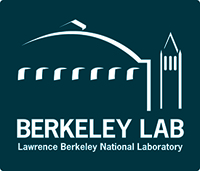The record-setting year is especially intriguing for scientists who study the flux of carbon between vegetation and the atmosphere. That’s because extreme climate events can dramatically change how terrestrial ecosystems absorb carbon. What’s more, the combination of a warmer spring followed by a dry summer is projected to be more prevalent in the U.S. under climate change.
In other words, although 2012 doesn’t precisely match projections—the spring was cooler and the summer was drier than climate models predict by the end of this century—the year offers a glimpse of the kinds of changes that could be in store for the carbon cycle in the United States.
Normally, terrestrial ecosystems are an important carbon sink. They take in more carbon than they release and globally offset one-third of the world’s fossil fuel emissions. The big question is: How will the exchange of carbon between vegetation and the atmosphere change in the decades to come?
To help answer this question, an international team of scientists used a network of 22 “carbon-sensing” towers throughout the continental United States in an effort to map the carbon flux across the nation during the 2012 drought. The towers are a part of the Ameriflux network, which is a community of scientists and sites that measure ecosystem carbon, water, and energy fluxes in North and South America. Lawrence Berkeley National Laboratory (Berkeley Lab) manages Ameriflux for the Department of Energy.
The research was led by Sebastian Wolf at UC Berkeley, who is now at ETH Zurich. It also involved scientists from several other institutions in the United States, Australia and the Netherlands. Their study was recently published in the journal PNAS.
“This research underscores the importance of Ameriflux in assessing the impact of climate variability on vegetation, especially over a large scale, with respect to carbon flux,” says Trevor Keenan, a research scientist in Berkeley Lab’s Climate & Ecosystems Division who contributed to the study while at Australia’s Macquarie University. Margaret Torn, a senior scientist in Berkeley Lab’s Climate & Ecosystems Division, heads the Ameriflux Management Project, which was established by the Department of Energy at Berkeley Lab to support the broad Ameriflux community.
The scientists found the warm spring triggered leaf growth and photosynthetic activity earlier in the year than usual, which led to more carbon uptake than normal. Plant activity then waned during the ensuing drought, which caused ecosystems to absorb less carbon than normal. Overall, forests and grasslands of the United States were negatively impacted by the intense drought, and so were not as strong of a carbon sink in 2012 as they are in normal years. The warm spring, however, helped offset this dip in carbon uptake.
In another twist, the surge in springtime growth used up more soil moisture than normal, which meant there was less water available for vegetation during the drought, making a bad situation even worse.
These results were derived in part from data obtained at the 22 Ameriflux towers, which were chosen because they’re located in different areas throughout the United States, and they each have at least five years of measurements. Gas analyzers on the towers measure how much carbon and water vapor is present in “packets” of air that travel past the tower. The analyzers can determine whether the carbon is coming from the ecosystem into the atmosphere, or the atmosphere into the ecosystem. The towers also measure temperature, precipitation, and soil moisture.
The towers used in the study are among roughly 160 active sites in the Ameriflux network. An important component of Ameriflux is the standardization of data from each site, which enables large-scale studies that encompass measurements from dozens of sites. Ameriflux also provides a central repository for the data, and a roving team of experts that ensures each site is working properly.
The scientists also used satellite measurements provided by the Jet Propulsion Laboratory, and inverse modeling from CarbonTracker provided by the Netherlands’ Wageningen University, both of which consistently showed the same results.
The research was supported in part by the European Commission’s FP7 Marie Curie International Outgoing Fellowship. Funding for the AmeriFlux Management Project was provided by the Department of Energy’s Office of Science.
###
Lawrence Berkeley National Laboratory addresses the world’s most urgent scientific challenges by advancing sustainable energy, protecting human health, creating new materials, and revealing the origin and fate of the universe. Founded in 1931, Berkeley Lab’s scientific expertise has been recognized with 13 Nobel prizes. The University of California manages Berkeley Lab for the U.S. Department of Energy’s Office of Science. For more, visit http:// www.lbl.gov.
DOE’s Office of Science is the single largest supporter of basic research in the physical sciences in the United States, and is working to address some of the most pressing challenges of our time. For more information, please visit http://www.science.energy.gov.
